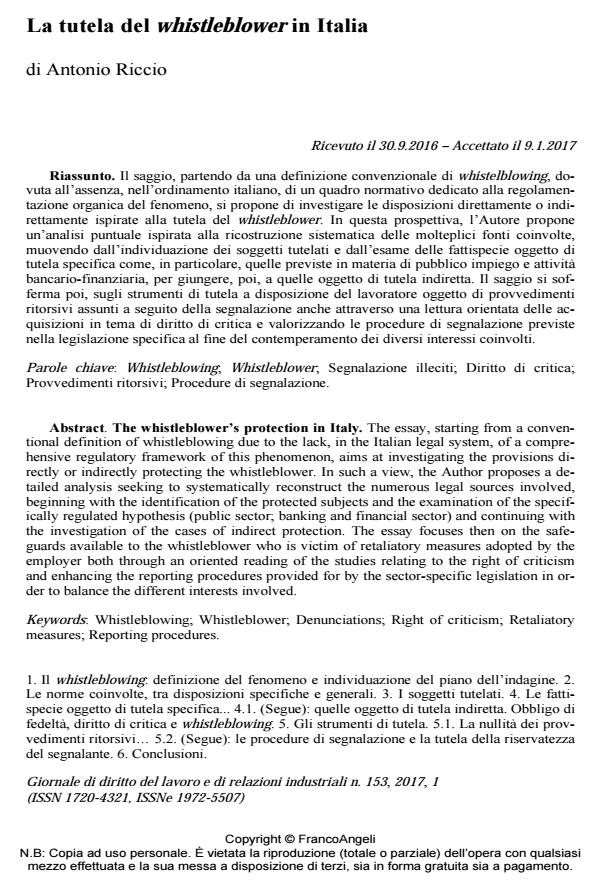The whistleblower’s protection in Italy
Journal title GIORNALE DI DIRITTO DEL LAVORO E DI RELAZIONI INDUSTRIALI
Author/s Antonio Riccio
Publishing Year 2017 Issue 2017/153
Language Italian Pages 28 P. 139-166 File size 287 KB
DOI 10.3280/GDL2017-153007
DOI is like a bar code for intellectual property: to have more infomation
click here
Below, you can see the article first page
If you want to buy this article in PDF format, you can do it, following the instructions to buy download credits

FrancoAngeli is member of Publishers International Linking Association, Inc (PILA), a not-for-profit association which run the CrossRef service enabling links to and from online scholarly content.
The essay, starting from a conventional definition of whistleblowing due to the lack, in the Italian legal system, of a comprehensive regulatory framework of this phenomenon, aims at investigating the provisions directly or indirectly protecting the whistleblower. In such a view, the Author proposes a detailed analysis seeking to systematically reconstruct the numerous legal sources involved, beginning with the identification of the protected subjects and the examination of the specifically regulated hypothesis (public sector; banking and financial sector) and continuing with the investigation of the cases of indirect protection. The essay focuses then on the safeguards available to the whistleblower who is victim of retaliatory measures adopted by the employer both through an oriented reading of the studies relating to the right of criticism and enhancing the reporting procedures provided for by the sector-specific legislation in order to balance the different interests involved. .
Keywords: Whistleblowing; Whistleblower; Denunciations; Right of criticism; Retaliatory measures; Reporting procedures
Antonio Riccio, La tutela del whistleblower in Italia in "GIORNALE DI DIRITTO DEL LAVORO E DI RELAZIONI INDUSTRIALI " 153/2017, pp 139-166, DOI: 10.3280/GDL2017-153007